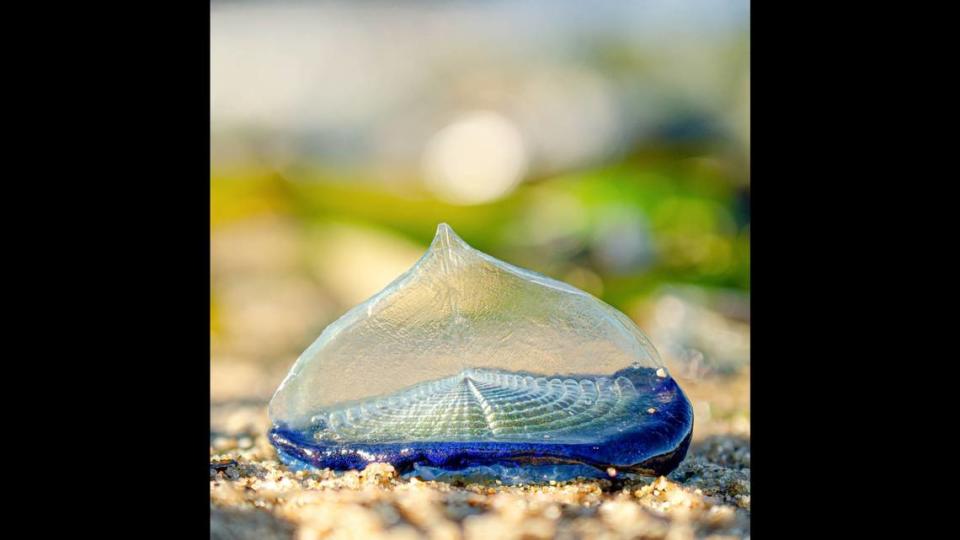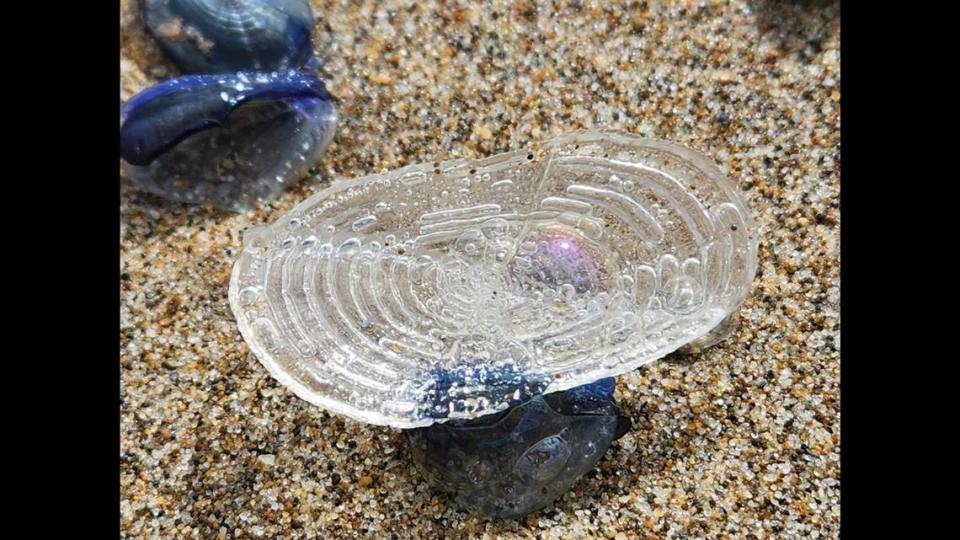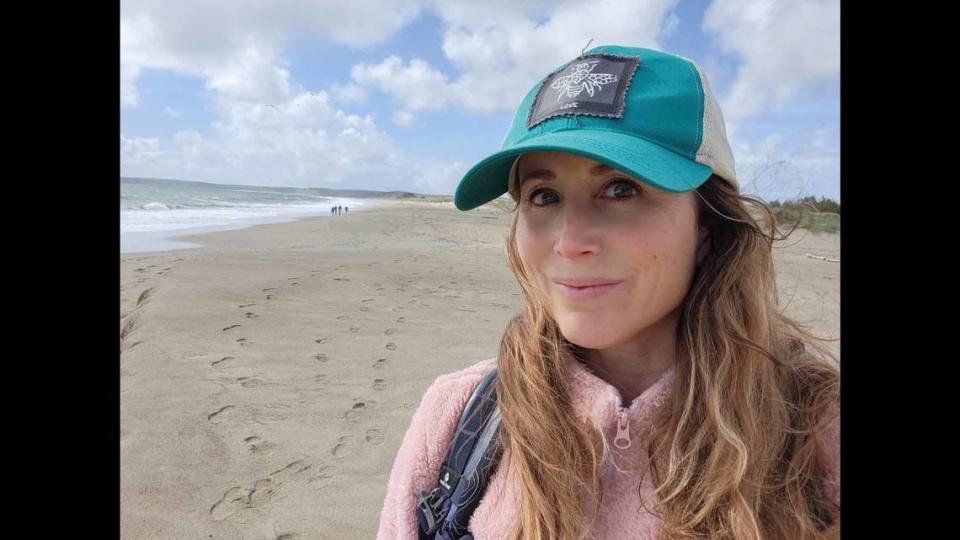Odd-looking ‘blue beach buddies’ flood California beach. What are the ‘magical’ blobs?
Nicole Sylvester is always looking for ways to connect others with nature.
As a well-being guide, the Californian told McClatchy News she works to mediate others’ stress by bringing them back to nature.
While scoping out the Point Reyes seashore as a potential new spot to take her clients on nature walks on Saturday, March 23, Sylvester said she stumbled upon something “magical” lining the shore of Limantour Beach.
She first noticed a couple of blue blobs, a striking contrast to the tan sand.

“I started to nature nerd out,” she said, adding that she just started snapping photos of the creatures at different angles.
But then, she looked up; she realized there were more than a few blobs lining the beach.
“The beach was just covered with them,” Sylvester said.
Sylvester estimates she spotted thousands of velella velella, or what she’s nicknamed “crazy cool, blue beach buddies.”
“Some just look like a gelatinous pile of blue,” Sylvester said. “It’s such a gorgeous blue color.”

Sighting thousands of these blobs stranded along the Point Reyes seashore is common during the spring and early summer months, Point Reyes National Seashore said in a March 20 Facebook post.
The iNaturalist website shows dozens of reports of by-the-wind sailors washing up on beaches up and down the Pacific Ocean coastline in recent weeks.
What to know about the seafarers
Also known as by-the-wind sailors, the blobs are not jellyfish but colonies of polyps similar to the Portuguese man o’ war, according to JellyWatch.

“These blue jellyfish-like creatures use their translucent, triangular sails to free-float around the ocean,” rangers said.
“By-the-wind sailor” is actually “a misnomer for this little animal,” according to the National Park Service.
With the inability to actually use their sail for navigation, NPS said the animals are “at the mercy of the winds as to where they go.”
If there is a shift in breeze, rangers said it “can spell bad news for these little seafarers.”
A wind that is too strong can carry them to the shore, leaving the creatures to die.
These “wrecks” are more common with “warmer ocean temperatures in the northern California current,” rangers said.
The sea animals live at the ocean’s surface.
Their blue coloration “likely helps the velella stay camouflaged and protected from the sun’s rays,” the park said.
To capture prey such as plankton, the park said the creatures use their “blue stinging tentacles.”
While the blobs “don’t have many known predators,” the park said they are prey for nudibranchs and purple sea snails.
What happens to those seafarers stranded on the beach?

Within a few days, the park said their “bodies decompose, leaving just their cellophane-like sail and floats.”
“You may see these scattered across the beach, too,” the park said.
‘Nature is so healing’
After encountering so many on the beach, Sylvester said she took to Facebook to share her experience.

“Crazy cool, blue beach buddies washing up at the beach,” Sylvester shared on the Facebook group Bay Area Hikers with a series of images she captured along the beach.
Dozens chimed in to comment on Sylvester’s find, as well as to share their own.
“I was just at Muir Beach near San Francisco and these things were all over the place,” one Facebook user commented.
Sylvester was ecstatic to see her post sparked such conversation, which she said she hopes will encourage others to go out and explore nature.
“If you’re in nature in any capacity, and you’re paying attention to your surroundings enough, you’re bound to find something that brings you ‘awe,’ which is why nature is so healing,” Sylvester said.
Limantour Beach is about a 50-mile drive northwest from San Francisco.
Hundreds of thousands of tiny sea creatures wash ashore in California. What are they?
‘Millions’ of bizarre blue blobs wash ashore on California beaches. What are they?
One of the world's top beaches is a 'blue carpet of slime' after creatures wash ashore

